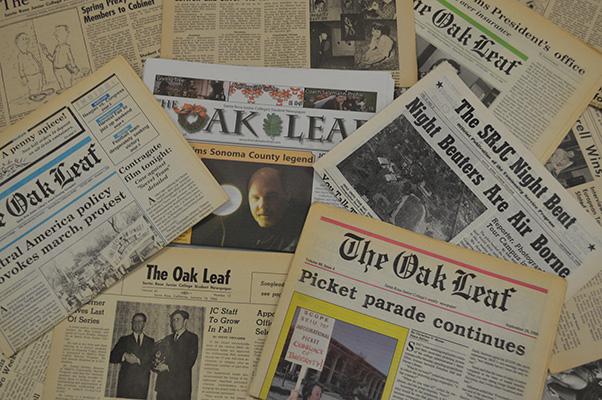The Santa Rosa Junior College Student Government Assembly (SGA) unanimously approved a recent measure to digitize the college’s Oak Leaf newspaper prints from 1928 to current production.
This endeavor would preserve and guarantee easy access to the history of the college as recounted by its own student body. “I can’t think of any other news source that would highlight what student life was like in the past,” said SGA President Josh Pinaula.
To implement funding, the board of trustees needs to approve the measure because the funds allotted to the digitization process come from a reserve account. The initiative is not to exceed $20,000, but digitizing options are still open for outsourcing such as Scanning America, California Digital Newspaper Collection or other professional scanning companies. A few firms have made bids based on loose estimates of the project, but a firm price will not be available until the magnitude of digitization is fully known and the bidding process is completed.
However, before actual digitization, the college needs to navigate the legalities of copyright. If the legal team deems Oak Leaf articles as college property, then there should be no problem. If not, then every contributing Oak Leaf writer from the past 88 years would need to approve the republishing of his or her work – or the family if the writer is deceased within the last 75 years.
Another concern is online storage. If the SRJC IT department is able to host the data, then there will be no ongoing costs of storage. But if the college outsources the online storage, the SRJC would have to pay thousands of dollars per year to the host website.
The Oak Leaf Newspaper originated in 1927 and has since printed weekly or bi-weekly issues. The print editions are archived in Doyle Library in bound volumes with nearly every issue since 1928 with the exceptions of a few years in the mid-1950s and several unfiled copies missing throughout.
A conservative estimate of the number of newsprint editions is around 1,000; almost all in delicate condition. In the 1920s and 1930s, newspaper contained acid, which causes the prints to deteriorate beyond the effects of normal aging. Because of the age and delicacy of the newsprints, the scanning process is trusted to professionals experienced in fragile documents.
Technical Services Librarian Paula Burks said, “We are protective because this is all we got. It’s our history and we want to take care of it.”



